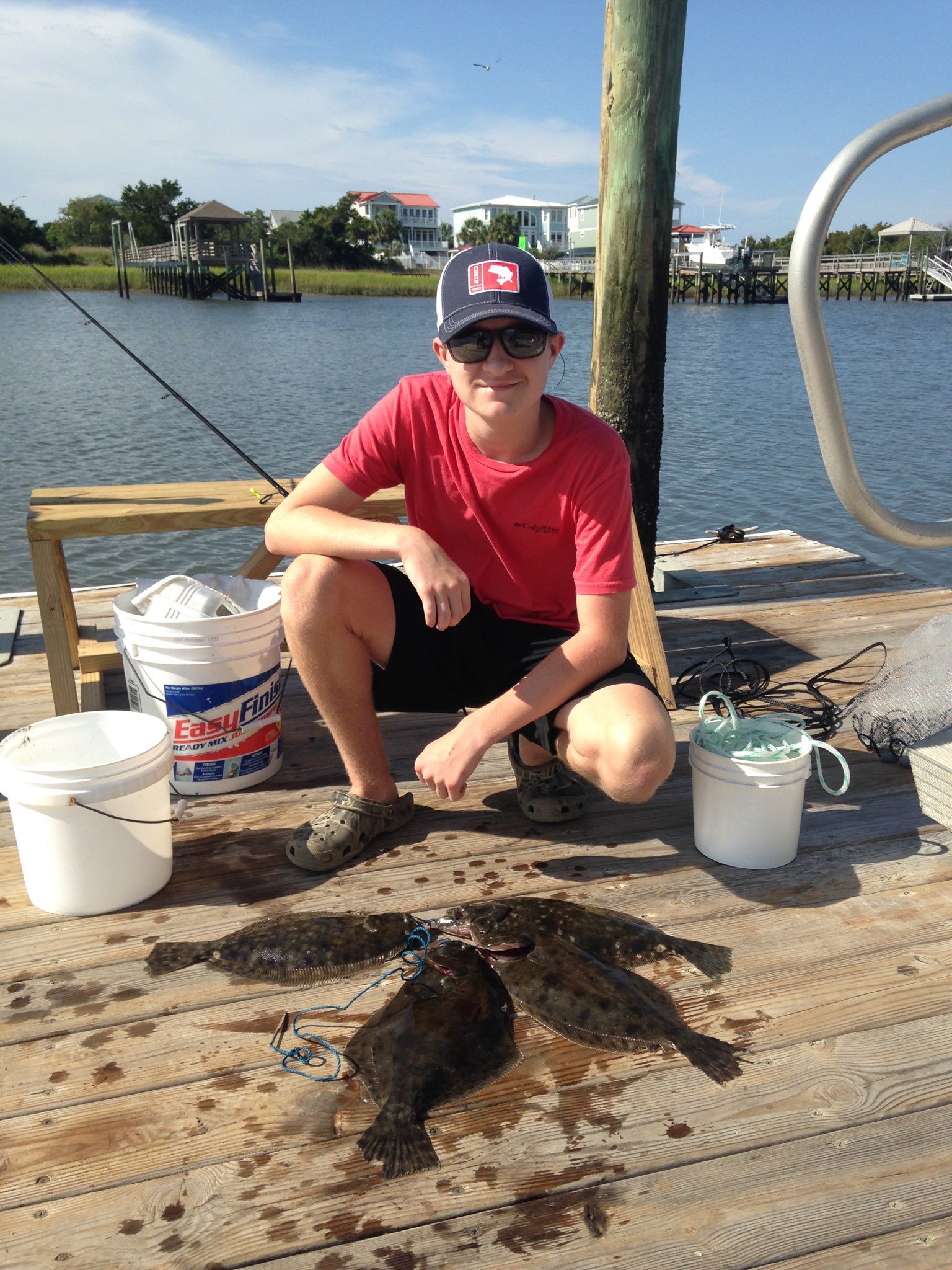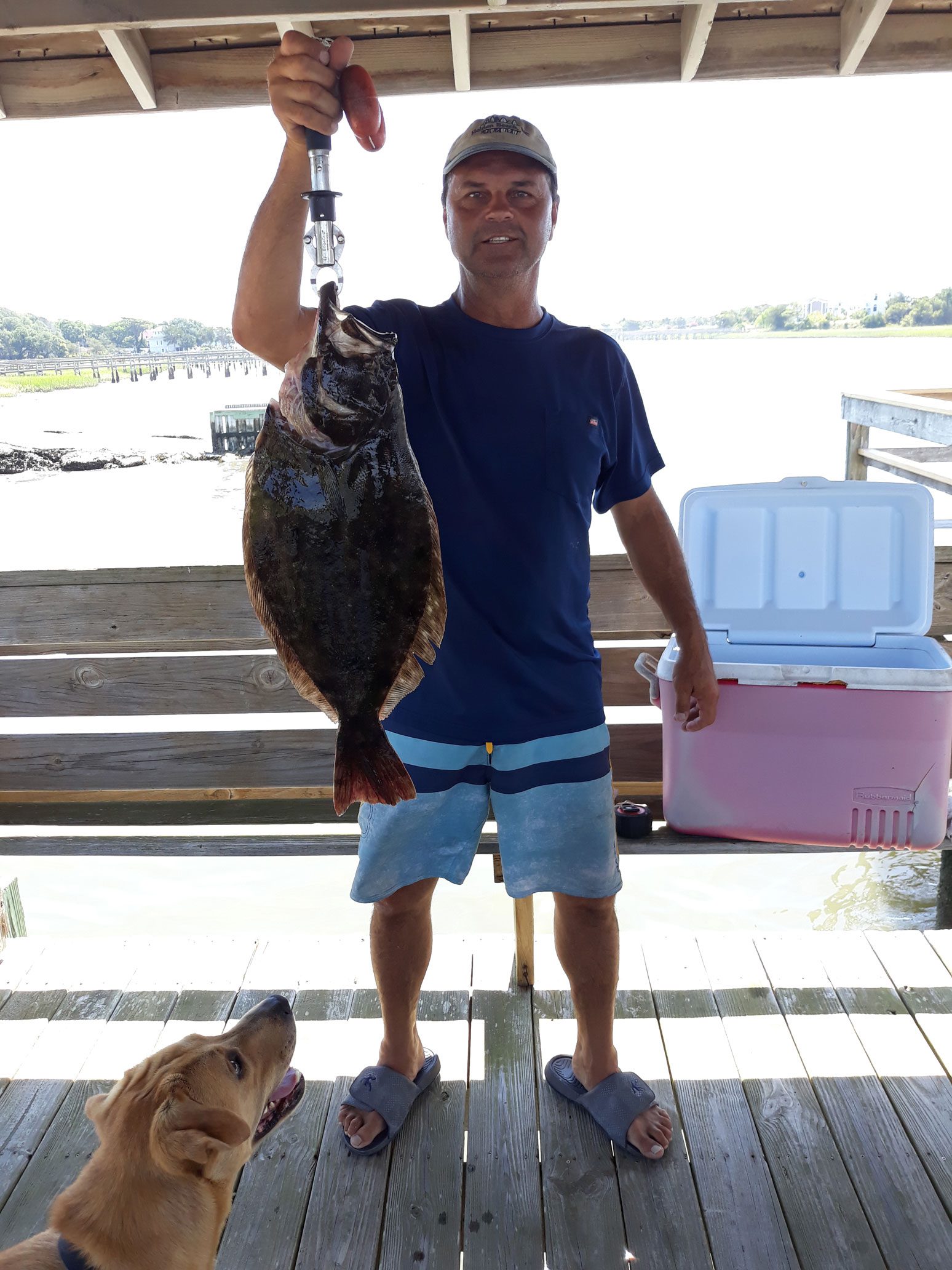North Myrtle Beach/Little River – August 15, 2019
Patrick, of Captain Smiley Fishing Charters, reports that inshore surface water temperatures in the morning on the north end of the Grand Strand are around 84 degrees. There are massive schools of finger mullet in the Intracoastal Waterway and its tributaries, and bait-sized shrimp are also abundant.
The cool snap has really helped the fishing on the north end of the Grand Strand, and a variety of species have been feeding well this week. Catches of redfish have been really good in shallow water on the low outgoing tide, and with the ICW so thick with finger mullet, you can see the reds busting bait on the banks. Live mullet will work, but cut mullet offers something different. Topwater plugs and Gulp jerk shads will also catch fish.
Flounder fishing has also been strong. The flounder are against the banks in the same areas as the redfish, but they are also being caught in deeper holes on lower tides. In addition to live mullet, anglers are also having success with Gulps (jerk shads, shrimp, and swimming minnows).
Early in the morning there has been a good topwater bite for trout, and Zara Spooks and MirrOlure Top Pups are both catching fish. However, the go-to bait has been live shrimp under a popping cork. The best places to target for catching excellent numbers has been ledges and drops in 3-7’ of water when there is current moving.
Trout can also be caught at the Little River jetties floating shrimp under a cork along the rocks, but probably the best way to catch trout is on a split shot rig with a #4 hook baited with a live shrimp. You can work this rig around the rocks without getting hung up as much as you would with a heavier weight.
Black drum are also eating live or cut shrimp fished on the bottom, and if you can hook them, you will get the occasional sheepshead. Ladyfish and sharks are also around at the jetties.
Just outside the inlet, you can catch lots of spanish mackerel trolling a #1 planer or a mackerel tree with a 00 Clarkspoon.

Holden Myrick, from Seagrove, NC, with an assortment of flounder caught in the ICW near Holden Beach. He was fishing with Carolina-rigged mullet minnows.
Bob, of Strange Magic Fishing Charters, reports that the inshore bite has cooled down somewhat from the last couple weeks due to the warmer water. The majority of the fish have been somewhat lethargic, short biting and such.
However, even though the bite has been slower, make sure to try as many places as you can, covering as much area as possible. You’ll find that fish will bite in an area for 10-15 minutes, and then they’ll cool off. Therefore, make sure to keep on the move. Try different spots. Go shallow and then also go to deeper creek spots for the most success. Fish will always look for comfort, safety, and a great food source. If there is bait around, the bigger fish will be there as well.

Hunter Hair with a 25″ flounder caught drifting a 5″ mullet minnow on a Carolina rig during an outgoing tide near the Holden Beach/Ocean Isle Inlet.
Larry, of Voyager Fishing Charters, reports that plenty of blacktip and spinner sharks are being caught just off the beach. Outside the inlet, fishing has been excellent for spanish mackerel, and there are a ton of barracuda swimming on the nearshore wrecks.
Trolling in the 35 mile range has produced king mackerel in the 20 lb. class, as well as plenty of bonita and amberjacks.
About 50 miles offshore of Little River Inlet in 120’ of water, bottom fishing is producing vermilion snappers, a couple of American red snappers, lots of triggers, big porgies, and scamp grouper. It’s been easy to fill the box with a variety of fish, and some nice kings have even been hitting sardines on the drift lines.
On the troll, wahoo and blackfin tuna are being caught at the break.
Michael, of Cherry Grove Pier, reports that with clear water, good oxygen levels, and temperatures of about 84 degrees, the bite has been strong. Pier anglers are catching good numbers of keeper-sized flounder, trout, and spanish mackerel.
On the bottom there have been catches of whiting, croaker, small spadefish, and some black drum.
Spanish have been abundant, but the king mackerel have been sporadic.





